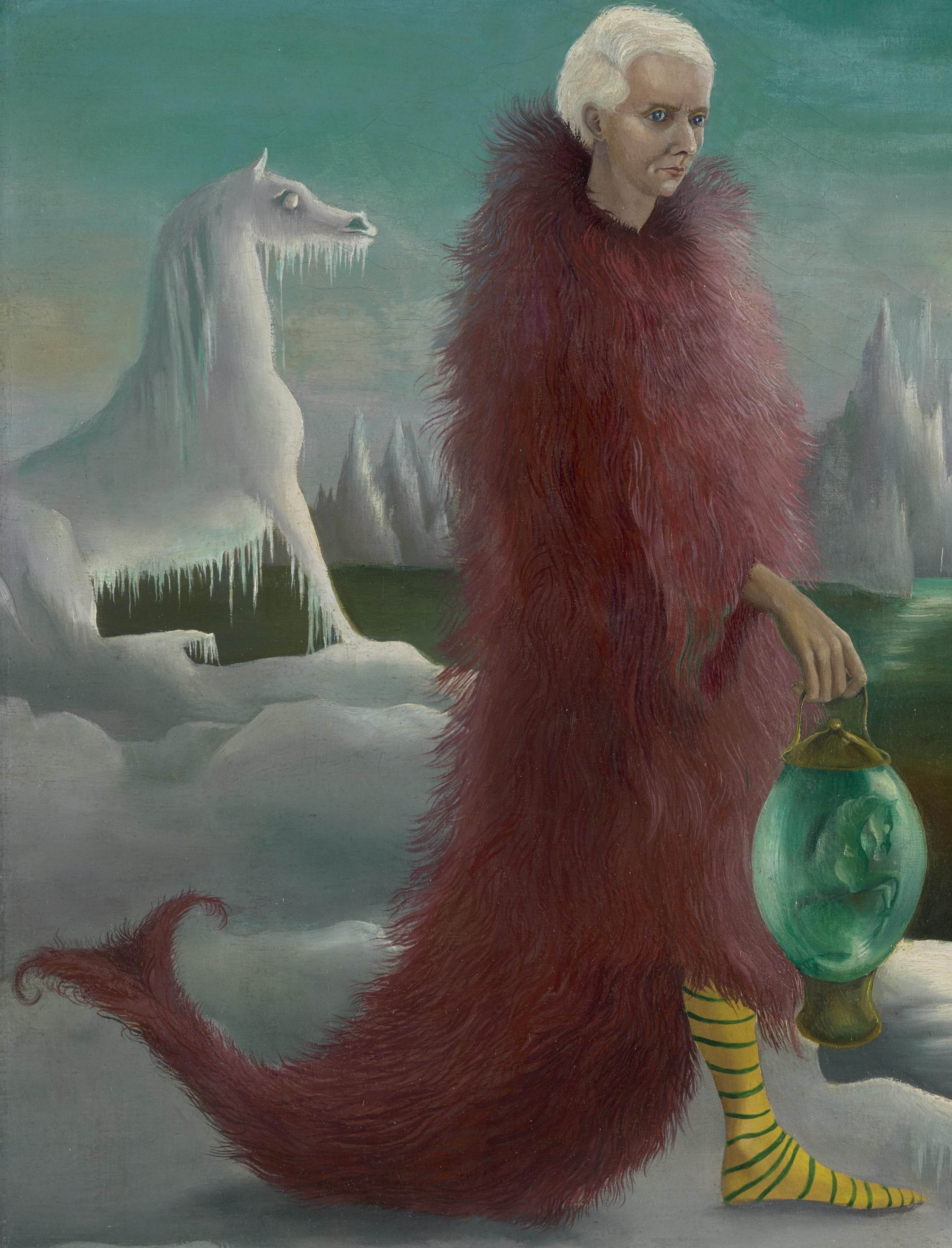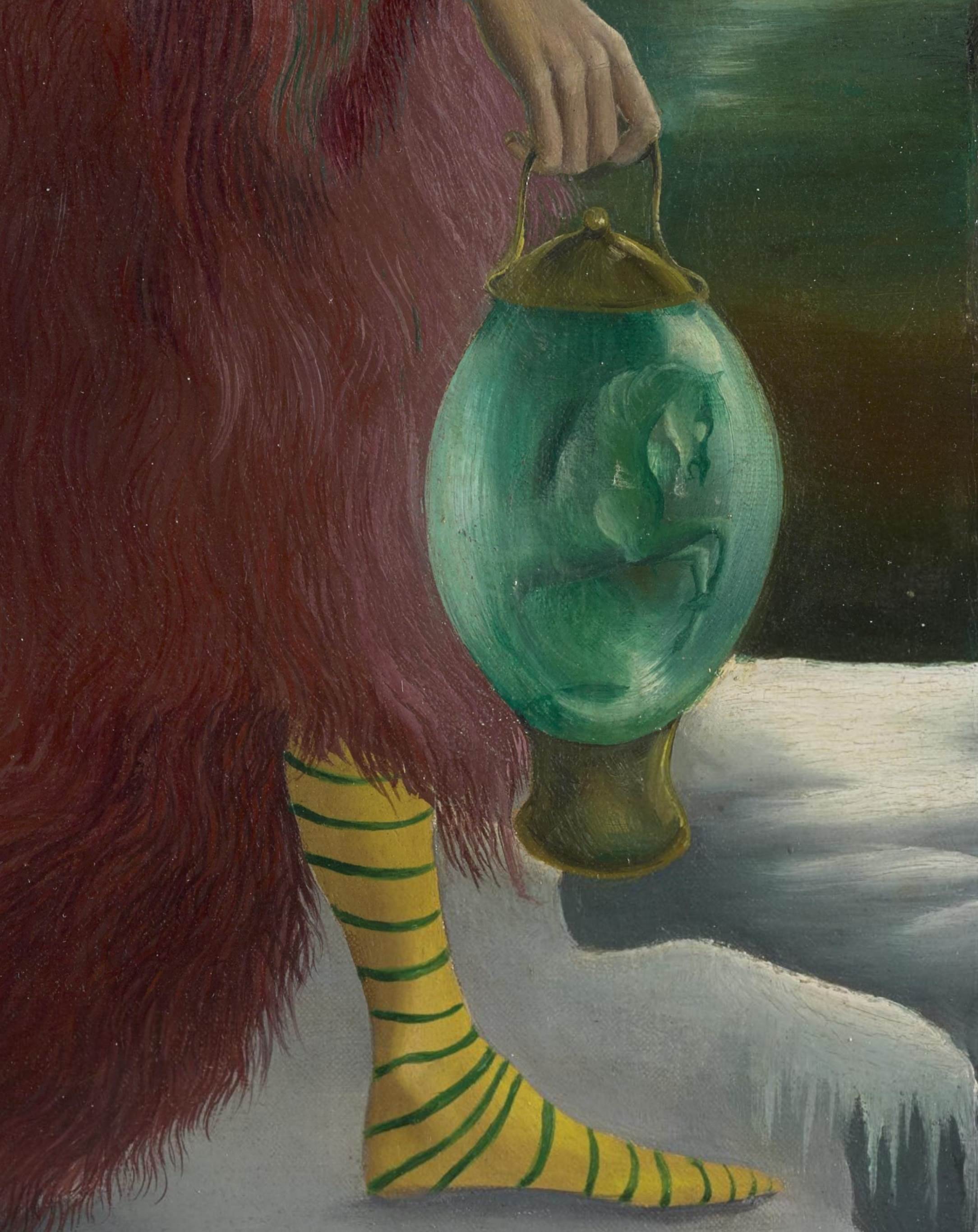Leonora Carrington first met and fell in love with the surrealist artist Max Ernst at a dinner party in London in 1937; they immediately started a relationship. Soon after Carrington moved to Paris to be with Ernst, where she met many of the Surrealists. In 1938 they moved to the village of Saint-Martin d’Ardèche, near Avignon, where this painting was made. In it, Ernst is shown holding a lantern containing a tiny horse. Horses often appear in Carrington’s early paintings and short stories, acting as her alter-ego. The meaning is ambiguous: the horse could be guiding Ernst forward, or could be imprisoned and at his mercy. The painting captures some of the ambivalence in their relationship at the time. The outbreak of the Second World War effectively brought their relationship to an end. Ernst, who was German, was imprisoned first by the French as an ‘enemy alien’, and subsequently by the Gestapo. Carrington fled France for Spain, where she was hospitalised, having experienced acute mental stress. Eventually, both escaped to New York where they exchanged portraits of each other, with Carrington presenting this work to Ernst.
马克斯·恩斯特画像Portrait of Max Ernst 利奥诺拉·卡林顿(Leonora Carrington)油画作品欣赏

马克斯·恩斯特画像Portrait of Max Ernst细节图欣赏:
马克斯·恩斯特细节图

带尾巴的红棕色外套细节图

条纹袜和提灯细节图

冰做的小马细节图

冰封世界细节图

天空景观细节图



评论